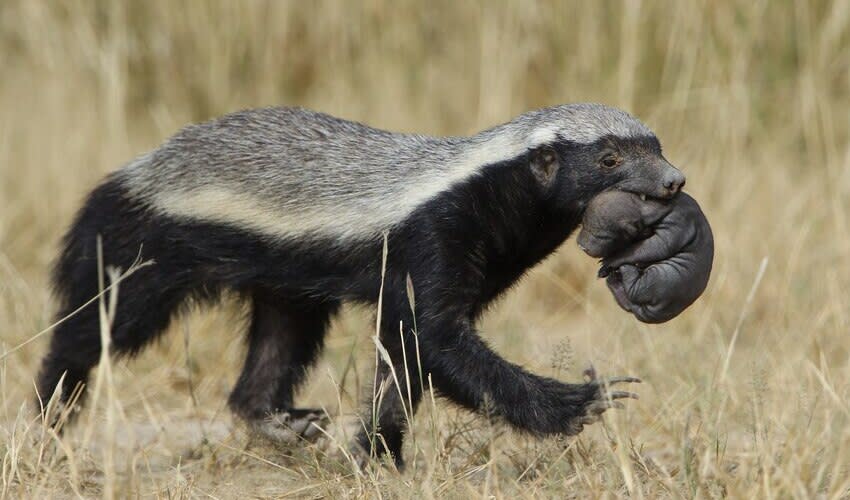Mellivora – Honey badger
Well known for their ferocity, these fearless little creatures are always ready to take on an entire pride of lions
The Honey Badger, often referred to as the ratel, is one of the most notorious and resilient members of the weasel family (Mustelidae), celebrated for its strength, tenacity, and fearsome reputation. Found across a wide range of habitats in Africa, the Middle East, and the Indian subcontinent, the honey badger has adapted to environments ranging from dense forests to arid deserts.
Their physique is built for survival. They possess a remarkably large head in proportion to their body, small eyes shielded by thick eyelids, and a muscular neck and shoulders that provide the strength necessary for digging and combat. Their front feet are equipped with broad, robust claws that are essential for excavating burrows, climbing, and seizing prey, while their smaller rear feet facilitate swift and agile movement.
One of the honey badger’s most distinctive features is its skin, which is incredibly thick, loose, and almost impervious to traditional predator attacks, including bites and stings. This physical trait allows them to twist and turn within their skin to fend off or counterattack predators even when seemingly caught. Additionally, their dark fur with a striking white or grey mantle running from their head down their back makes them easily recognizable, though coloration can vary among subspecies.
Honey badgers exhibit remarkable versatility in their behavior. While primarily nocturnal, they are known to forage during the day, especially in areas undisturbed by human activity. Their diet is omnivorous but leans heavily towards carnivory, with a preference for snakes, including venomous species, small mammals, birds, eggs, and frogs. Their powerful jaws and sharp teeth enable them to consume virtually every part of their prey, including bones.
Notably, honey badgers also consume fruit, bulbs, and roots, demonstrating their adaptability in sourcing food. Their infamous pursuit of honey, raiding beehives with an almost reckless disregard for bee stings, showcases their determination and resourcefulness in exploiting available food sources.
Species in this genus
Honey badger
Well known for their ferocity, these fearless little creatures are always ready to take on an entire pride of lions

